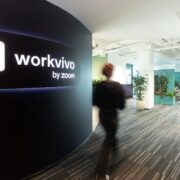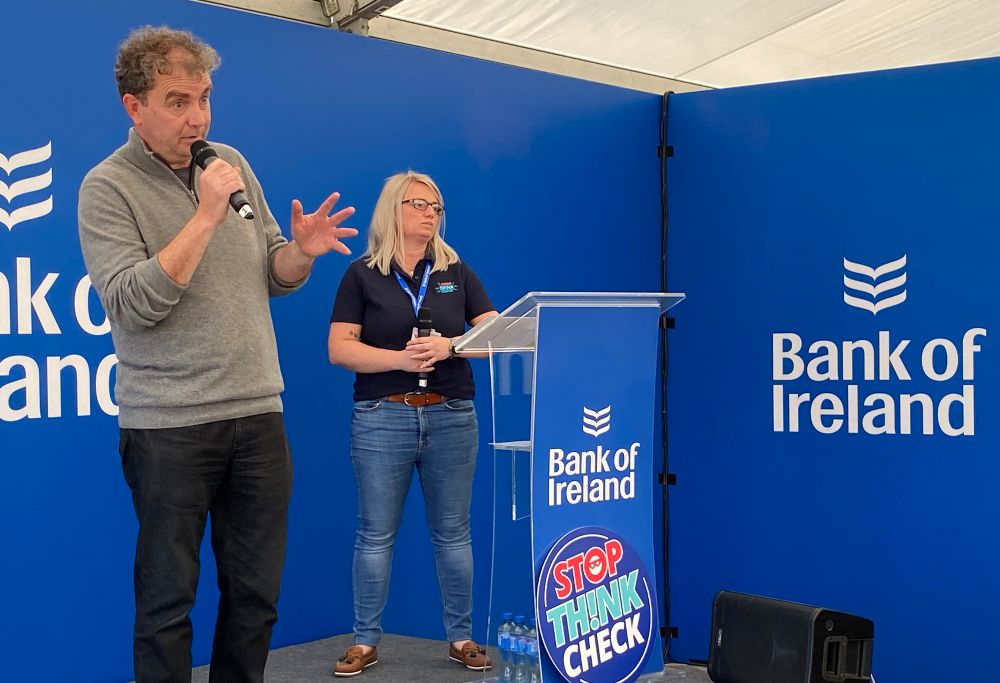We are beginning to see the emergence of some new trends on Irish farms, notes Bank of Ireland’s head of Agri Sector Eoin Lowry in his Agriculture Sector H1 Insights and H2 Outlook 2024 report.
“For this sector to continue to build on its past success and improving its environmental footprint, farmers need the confidence to invest in their farms future”
Foreword
As the summer days draw to a close, it is always an opportune time to reflect on the season to date. In this edition of our bi-annual Insights and Outlook we look at the key trends our regional Agri Development Managers are seeing amongst our customers across the country.
What is apparent over the past 12 months is that we are beginning to see the emergence of some new trends on farm.
Some of these are as a result of evolving Government Policy such as enhanced focus on not only protecting the environment but improving it along with achieving the sectoral emissions targets. This is beginning to impact output, particularly on dairy farms. Similarly, farmers are very aware that the weather has negatively impacted farm output and driven costs over the past 12 months. However there is now an acceptance that climate change is not something in the future but more that our weather is already changing.
As such, farm gate prices and input costs due to inflation have hit farm profitability over the past 12 months (Teagasc, National Farm Survey (NFS), July 2024).
Not surprisingly, the mood amongst farmers is somewhat subdued, with a weaker sentiment towards the future. This is not helped by a lack of policy clarity around key operational farm factors such as stocking rates and future environmental regulations. Combined this has the impact of reducing confidence at farm level especially around investment in the farm’s future. Irish tractor sales are back c.10% (Farm Tractor and Machinery Trade Association, July 2024) year to date compared to same period last year.
It is a similar situation for a lot of machinery manufacturers. Building and development investment is also back significantly.
The only investment that is holding up is land- and this is usually borne out of opportunity and the fact that a field comes up for sale on average only every 200 years in Ireland.
Despite lower farm incomes in 2023 compared to 2022 (Teagasc, NFS, July 2024), the sector looks in rude health –the majority of farms continue to be profitable (Teagasc, NFS, July 2024), farm debt levels are at 25 year lows (Central Bank, SME lending), fewer farms have debt than 5 years ago (Teagasc, NFS, July 2024) and agri deposits continue elevated well above pre-Covid levels (Central Bank, Irish Resident Deposits Private Sector Enterprises). However, when we look at individual farms, there are some signs of financial stress where they have lower productivity, have increased levels of debt to earnings, have difficulty paying bills and are increasingly concerned about the long term viability of the business. In our ,experience much of this can be solved by engaging with their accountant and financial provider, examining the structure of debt and the business and providing a path forward. Our team of agrilenders are available to discuss these options and possible solutions with our customers.
Finally for this sector to continue to build on its past success and improving its environmental footprint, farmers need the confidence to invest in their farms future. To have confidence they need clarity and a degree of certainty. The market dynamics farming operates in are volatile and carry a degree of risk. Anywhere risk and uncertainty can be removed is positive not only for the farm business, but also the wellbeing of the farm family and the sector as a whole.
Mark Glennon, Agricultural Development Manager (North Leinster, Connacht, Ulster)
“We are seeing an increasing number of livestock farmers starting to adjust their stocking rate to what their land is capable of supporting”
Investment from cash creating cashflow challenges: We are beginning to see cashflow tightness on some dairy and tillage farms as margins have come back significantly in these sectors in past 12 months. In many instances this is driven by capital expenditure works which have been funded via cashflow in the previous 6-12 months. We are also seeing farmers feeding more concentrates which is driving costs. Given the higher feed bills with Co-ops and Merchants over the summer months, we are seeing greater demand for stocking loans and overdrafts.
We are working with our customers to retrospectively fund this cap-ex and/or pay merchant/co-op bills with a suitable product such as a term loan, or short term working capital such as a stocking loan or bank overdraft.
Farmers adjusting to lower stocking rates: We are seeing an increasing number of livestock farmers starting to adjust their stocking rate to what their land is capable of supporting i.e. the amount of grass that the farm can grow consistently from one year to the next. We have seen that more intensively stocked farms were impacted more financially over the past 12 months, as a result of poor weather conditions and higher costs. In general, our dairy farming customers who are in derogation have adjusted to the lower 220Kg/Ha Org N limit without too much disruption to their core business. This has been possible by; sourcing extra land, removing surplus low productive stock, removing beef stock, contract rearing in part or in full, and ensuring that they are farming at the most effective excretion rate band.
Increasing interest in Anaerobic Digestion (AD) projects: We have a number of proposals in train in the region for large scale AD plants however challenges still remain including security of feedstock supply, planning delays, grant support, grid connections and off-take agreements. We are beginning to see appetite from large scale intensive farm operations where they see it as an option to diversify income, reduce costs and utilise by-products from the farm.
Seeing significant demand from poultry sector: Despite higher development costs investment continues in the poultry sector. While new entrants to the broiler sector in particular have reduced (due to higher development costs), existing operators continue to invest and expand. We are seeing some expansion and new entrants into duck production as a result of increased demand. There is significant demand at present in the egg- sector with a number of new entrants alongside expansion of free range production.
Susan Maher, Agricultural Development Manager (South East & Midlands)
“We continue to see very strong demand for land, building on a very strong market in 2023”
Buoyant land market driven by nitrates and dairy: Over the past 12-18 months, we have seen a significant switch in the proportion of lending from farm development to land purchase. We are seeing farms with a high stocking rate, or a high percentage of rented lands or farms with surplus deposits on hand have a strong appetite to buy land. We continue to see very strong demand for land, building on a very strong market in 2023. Average land prices have ranged from €10,000 per acre to in excess of €30,000 per acre depending on location, land quality and local demand. Non-Farmer Investors are still competing strongly for land.
Existing farm buildings becoming valuable: Given increased concrete and building costs, we are seeing a strong appetite from farmers to lease established farms with substantial farm buildings. These opportunities are arising where existing farmers are opting to retire or exit production. A value is now being attributed to existing farm buildings driven by current building and concrete costs which support increasing slurry storage capacity and overall housing facilities at a lower cost to new builds.
Increase in farmers exiting dairy: Across the country, we are beginning to see more farmers with no successors consider exiting dairying. Those that are exiting are looking to either lease the land or (depending on age) convert the farm to a calf to beef/ beef cattle/contract rearing system. The cost of compliance with increased environmental regulations is also a consideration to exit for farmers.
Fodder self-sufficiency and security of supply key focus on farm: In this region, we are seeing many livestock farmers try to build fodder supplies by incorporating their own whole crops alongside adding back in some tillage into the farm system. This is helping to ensure supply security for the winter and also allow more self-sufficiency in straw and fodder to reduce reliance on market dynamics.
Farmers cost of living has increased: like everyone else, we are seeing the cost of living increase for farmers. Based on 2023 accounts, drawings have increased across many farms (regardless of farm system) compared to 2022. Some of the increase may be due to higher than normal profits allowing for additional drawings. However when profitability dropped in 2023 versus 2022, drawings did not (or could not) reduce, as cost of living increases did not come back.
John Fitzgerald, Agricultural Development Manager (Cork, Tipperary, Waterford)
“Across the country we have seen a significant slowdown in the number of new entrants to dairy compared to recent years”
Subdued investment appetite driven by uncertainty and poor weather: Appetite to invest in farm infrastructure, machinery and equipment has been much lower in 2024 as a result of poor weather conditions over the past 12 months; lower farm profitability with a lot of uncertainty around production costs; uncertainty around the future of the nitrates derogation and inflated construction costs. We are expecting dairy farmers to invest in increased slurry storage capacity to comply with nitrates regulations, however there seems to be a reluctance at farm level currently given the lack of clarity around future stocking levels.
New entrants to dairy slowing: Across the country we have seen a significant slowdown in the number of new entrants to dairy compared to recent years. Prohibitive cost of sourcing land; cost of farm development; planning issues and more subdued future outlook are limiting the numbers entering.
However in some regions (particularly in north west and midlands) there continues to be an appetite from young qualified farmers to enter dairy from lower income farm systems such as beef. We are not seeing green field conversions like we did in the past. This is particularly true of tillage farm conversions given the cost to convert has increased to c.€10k per cow. Given these high building costs, many farmers who are converting to dairy, are now looking to adapt existing buildings in an effort to reduce conversion costs. There is also a notable trend where we are seeing more conversions invest on a phased basis – milking parlour & grazing infrastructure prioritised with farmers looking to existing sheds for over-wintering, calving and calf sheds. We are also seeing an increasing number of new entrants considering robotic milking systems given labour challenges.
Fixing interest rates to remove uncertainty: As a result of the ECB interest rate rises over the past 18 months, an increasing number of our customers (especially those with greater borrowings) are enquiring about fixing the interest rates on their loans. Given the current lower margin environment, knowing how much loan repayments will be into the future provides a degree of certainty for the farmer.
Farmers investing in solar to reduce costs: We are seeing an increasing number of farmers invest in solar (supported by TAMS 3 grants) to reduce energy costs on the back of high energy prices and strong return on investment. There is a particularly strong focus on poultry, pigs and dairy farms.
Pat Byrnes, Agricultural Development Manager (Clare, Kerry, Limerick, Tipperary)
“We are seeing an increasing number of farmers invest in solar to take advantage of the attractive grants and reduce their energy bills”
Sustainability being embraced by farmers: In general increasing numbers of farmers are investing in sustainable action on their farms. For example, dairy farmers are embracing sustainable actions, Low Emission Slurry Spreading (LESS) and investing in new equipment, they are also changing how they grow grass, incorporating clover in new swards and using protected urea. Our tillage farming customers in particular are increasingly interested and incorporating precision and regenerative agriculture into their farming practices. We are seeing an increasing number of farmers invest in solar to take advantage of the attractive grants and reduce their energy bills.
Farmers who are taking on sustainable actions can avail of an Enviroflex* loan through participating co-ops.
Pig sector continues to consolidate: Strong trading conditions in 2023 and into 2024 have bolstered the financial position of many pig farms and has seen some pig farmers look at new investment and acquire additional units. Consolidation, which has been a key feature of the pig sector for decades continues, with larger existing operators acquiring smaller units. More recently this has been driven by the limited ability to expand existing units as a result of development costs and planning issues.
Farmers investing in additional slurry storage: We have seen a large increase in the number of farmers investing in additional slurry storage to future proof their business. In some cases, they are moving ahead of regulatory requirements, taking advantage of significant grants currently available. We see some farmers putting 6 months slurry storage in place to allow for potentially longer winters and later springs alongside providing more options and better utilisation of slurry. In many cases, this is an excellent investment, in that additional slurry storage will enable farmers to make better use of slurry which reduces dependence on chemical fertilizer, makes more efficient use of labour and is also better for the environment. However we are also having discussions with farmers around being aware of potential future changes to the nitrates derogation that may result in reduced stock numbers and in some instances there may not be a requirement to invest in additional slurry storage.
Beef remains highly dependent on government payments:
On the beef side, we continue to see a level of investment. Despite the higher prices for beef overall, margins remain tight and the dependence on support and scheme payments continues on the majority of beef farms. We are seeing a pickup in investment in labour saving technologies and animal housing to improve work life balance, productivity and reduce labour demands.
-
Bank of Ireland is welcoming new customers every day – funding investments, working capital and expansions across multiple sectors. To learn more, click here
-
Listen to the ThinkBusiness Podcast for business insights and inspiration. All episodes are here. You can also listen to the Podcast on:
-
Spotify
-
SoundCloud
-
Apple






